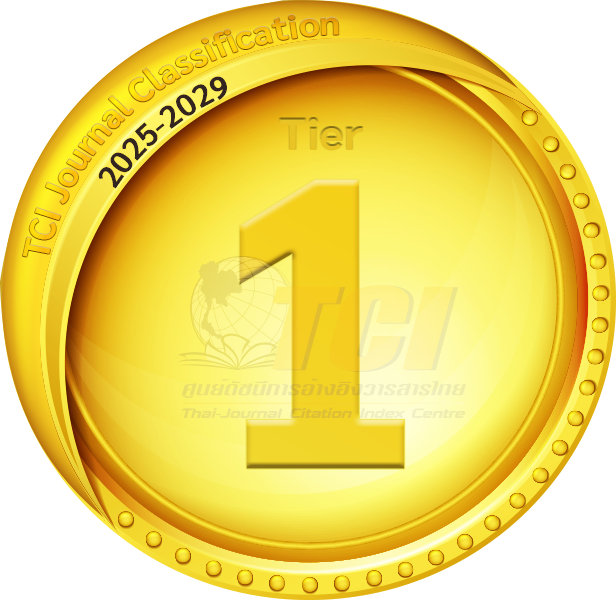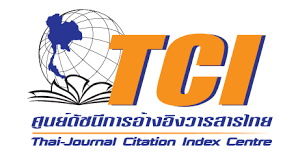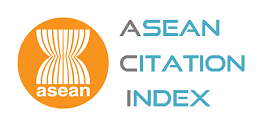A causal relationship model of learning outcomes model for engineering undergraduate students
- Pattrawadee Makmee, Cognitive Science and Innovation Research Unit, College of Research Methodology and Cognitive Science, Burapha University, Chonburi, Thailand, Corresponding author Email: pattrawadee@gmail.com
- Buratin Khampirat, Institute of social technology, Suranaree University of Technology, Saraburi, Thailand
Abstract
The objectives of this research were to develop indicators and learning outcomes for engineering undergraduate student’s measurement tools and develop and validate a causal relationship model of learning outcomes for engineering undergraduate students. This study consists of a survey that described the indicators and causal relationship and the result of the study. The survey employed five-point Likert scale questionnaires with 55 items, including four factors, namely human skills, organizational skills, information skills, and knowledge and skills in engineering, and causal relationship. The result from 1,316 engineering undergraduate students showed that the causal relationship model was consistent with empirical data at a moderate level. Learning outcomes are strongly influenced by learning style, followed by achievement goal orientation scale, life-long learning skills, institutional and goal commitments, engineering skill self-efficacy, engineering career outcome expectations, and student status through cooperative education, respectively.
In conclusion, learning style was the most influential but student status through cooperative education was less influential for learning outcomes. However, all variables were important for learning outcomes of engineering undergraduate students.
Keywords: causal relationship of learning outcomes model, undergraduate students, engineering
DOI: 10.14456/rjsh.2020.6
References
Bandura, A. (2006). Guide for constructing self-efficacy scales. Self-efficacy beliefs of adolescents, 5(1), 307-337.
Buacharen, P., Techapunratanakul, N., & Buochareon, P. (2019). Factors affecting learning equairy behavior of bachelor’s degree in the faculty of engineering. Journal of graduate studies review MCU Phrae, 5(1), 107-125.
Concannon, J. P., & Barrow, L. H. (2009). A cross-sectional study of engineering students’ self-efficacy by gender, ethnicity, year, and transfer status. Journal of Science Education and Technology, 18(2), 163-172. doi: 10.1007/210956-008-9141-3
de Bruin, A. B., Thiede, K. W., & Camp, G. (2001). Generating keywords improves metacomprehension and self-regulation in elementary and middle school children. Journal of Experimental Child Psychology, 109(3), 294-310.
Douglas, E. P. (2012). Defining and measuring critical thinking in engineering. Procedia-Social and Behavioral Sciences, 56, 153-159.
Drewery, D., Pretti, T. J., & Barclay, S. (2016). Examining the Effects of Perceived Relevance and Work-Related Subjective Well-Being on Individual Performance for Co-Op Students. Asia-Pacific Journal of Cooperative Education, 17(2), 119-134.
Engineers Canada Accreditation Board. (2015). 2015 Accreditation criteria and procedures. Retrieved from https://www.engineerscanada.ca/sites/default/files/accreditation_criteria_procedures_2015_0.pdf
González, J., & Wagenaar, R. (2008). Tuning educational structures in Europe. Universities’ contribution to the Bologna process: An introduction (2nd ed). Bilbao, Spain: University of Deusto Press.
Graunke, S. S., & Woosley, S. A. (2005). An exploration of the factors that affect the academic success of college sophomores. College Student Journal, 39(2), 367-379.
Hair J. F., Black, W. C., Babin, B. J., & Anderson, R. E. (2014). Multivariate data analysis: A global perspective. London, UK: Pearson Education.
Harris, K. R., Friedlander, B. D., Saddler, B., Frizzelle, R., & Graham, S. (2005). Self-monitoring of attention versus self-monitoring of academic performance: Effects among students with ADHD in the general education classroom. Journal of Special Education, 39(3), 145-156.
Hurwitz, M., & Hurwitz, S. (2015). Leadership is half the story: A fresh look at followership, leadership, & collaboration. Toronto, Canada: University of Toronto Press.
Khampirat, B. (2008). Development and validation of instrument to measure characteristics and competencies of science and technology graduates: A second-order confirmatory factor analysis. Journal of the Association of Researchers, 13(3), 60-71.
Khandani, S. (2005). Engineering design process: Education transfer plan. Washington DC, US:
Saylor Academy. Retrieved from https://www.saylor.org/site/wp-content/uploads/2012/09/ME101-4.1-Engineering-Design-Process.pdf
Kobzeva, N. (2015). Scrabble as a tool for engineering students’ critical thinking skills development. Procedia-Social and Behavioral Sciences, 182(2015), 369-374.
Lesch, S. (1995). Learning outcomes: Learning Achieved by the End of a Course or Program Knowledge – Skills – Attitudes. Retrieved from https://www.lamission.edu/slo/docs/Learning%20Outcomes%20and%20samples.doc
Mamaril, N. J. A. (2014). Measuring undergraduate students’ engineering self-efficacy: A scale validation study (Doctoral dissertation). University of Kentucky Educational, Lexington, Kentucky.
Mann, T. L., & Dolan, A. V. (2003). Understanding and embracing diversity in our world. Delaware, US: University of Delaware. Retrieved from https://www1.udel.edu/cds/downloads/delAwarespring03.pdf
Nusche, D. (2008). Assessment of learning outcomes in higher education: A comparative review of selected practices. OECD Education Working Paper No. 15. Paris, France: OECD Publishing.
Office of the Higher Education Commission. (2013). Higher Education Development Plan 11th Issue (2012-2016). Bangkok, Thailand: Chulalongkorn University Printing House.
Partnership for 21st Century Skills. (2009). 21st century skills, education & competitiveness. Arizona, US: National Education Association. Retrieved from http://www.p21.org/storage/documents/21st_century_skills_education_and_competitiveness_guide.pdf
Petchkong, J. (2016). Causal factors affecting to learning outcomes of nursing students: Boromarajonani College of Nursing Chakriraj. Eau Heritage Journal Science and Technology, 10(2), 199-211.
Pungchompoo, W. (2016). The lesson learned from the 21st century skills: Gerotological nursing course. Nursing Journal, 43(3), 46-57.
Ribera, T., Ribera, A. K., BrckaLorenz, A., & Laird, T. N. (2012). Faculty fostering collaborative learning and personal and social responsibility. Association for Institutional Research Annual Forum in New Orleans, Indiana University, Bloomington Retrieved from http://cpr.indiana.edu/uploads/AIR%202012%20(CL_PSR).pdf
Srisai, S. (2016). Competency factors affecting learning outcomes and perception in terms of university overview of students at Chulalongkorn University. Journal of Education Studies, 44(4), 188-205.
UNESCO. (2009). Communique 2009 World conference on higher education: The new dynamics of higher education and research for societal change and development. Retrieved from http://www.unesco.org/fileadmin/MULTIMEDIA/HQ/ED/ED/pdf/WCHE_2009/FINAL%20 COMMUNIQUE%20WCHE%202009.pdf
UNESCO. (2010). Monitoring student learning outcomes and school performance: Towards improving quality of learning and reducing disparities. UNESCO-KEDI Seminar, Seoul, Republic of Korea. Retrieved from http://www.unescobkk.org/education/epr/epr-partnerships/unesco-kedi/unesco-kedi-seminar-2010/
UNESCO. (2011). UNESCO national education support strategy (UNESS) Thailand 2010-2015. Bangkok, Thailand: UNESCO. Retrieved from http://www.unescobkk.org/fileadmin/user_upload/epr/UNESS/uness_thailand_2011.pdf
Ursin, J., Lasonen, J., Hernandez-Gantes, V., & Fletcher, E. (2014). Definitions of learning outcomes in undergraduate study programs: A case study between Finland and the United States. In Proceedings of the European Conference on Educational Research. Porto, Portugal. Retrieved from http://www.eera-ecer.de/ecer-programmes/conference/19/contribution/31128/
Wolters, C. A. (2011). Regulation of motivation: Contextual and social aspects. Teachers College Record, 113(2), 265-283.
ŽivkoviĿ, S. (2016). A model of critical thinking as an important attribute for success in the 21st century. Procedia-Social and Behavioral Sciences, 232, 102-108.
Zimmerman, B. (2008). Investigating self-regulation and motivation: Historical background, methodological developments, and future prospects. American Educational Research Journal, 45(1), 166-183.
Zumbrunn, S., Tadlock, J., & Roberts, E. D. (2011). Encouraging self-regulated learning in the classroom: A review of the literature. Virginia, US: MERC Publication. Retrieved from http://www.self-regulation.ca/download/pdf_documents/Self%20 Regulated%20Learning.pdf

Indexed in


Search